Semalt's Page Speed Analyzer Is The Remedy For Your Website
Table Of Contents
1. What Is Semalt's Page Speed Analyzer?
2. Why Page Load Speed Matters?
3. Understanding Semalt's Page Speed Analyzer With Live Example
4. How To Instantly Boost The Load Speed?
5. Final Words
Today, the fate of a website or webpage largely depends on how fast it loads. To understand the importance of load speed of a webpage, have a look at these points:
- The pages loading fast not only attract more visitors but also keep them engaged for a long time. The more time spent on a webpage / website usually results in more business.
- The time in which a webpage load impacts its bounce rate. The faster loading webpages have a low bounce rate, whereas the bounce rate is high of pages loading slowly. Google understands that webpages having a high bounce rate are useless (or not so useful). Therefore, they won't perform well in search results.
By now, you might have got a hint of why the page load speed matters. Yes, the load speed impacts SEO as well as the user experience.
There are several page speed analyzers over the internet, but most of them are of no help when the goal is to enhance the load speed or performance of a webpage / website.
Do you know why?
Because they don't audit your page on all essential parameters and thus, fail to point out crucial errors and provide fixes. But, if you analyze a page with Semalt's Page Speed Analyzer, worries about such things can be kept at bay.
What Is Semalt's Page Speed Analyzer?
Page Speed Analyzer from Semalt is an analyzing tool to determine whether a website's load time meets the Google search engine requirements. It also helps in identifying the errors affecting the load time of a webpage and suggests fixes to optimize it.
Experts believe it to be a crucial performance analyzing tool because a website's load time can play a decisive role in its success or failure. Let's see how you can get access to this free Page Speed Analyzer in just three steps.
Step 1: Open your web browser and type semalt.net in the address bar. It'll take you to the homepage of Semalt's Powerful SEO Tools For Your Business.
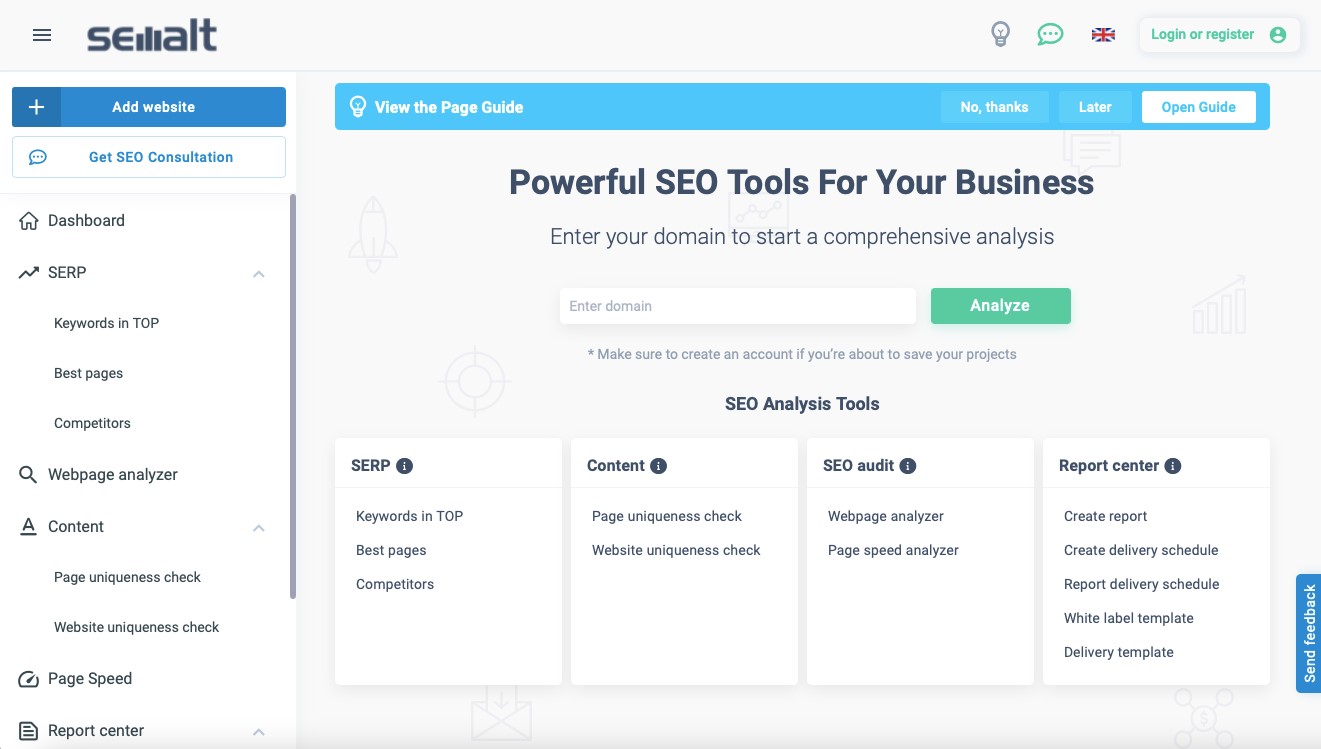
Step 2: Move the cursor to the left side of the window and click on Page Speed.
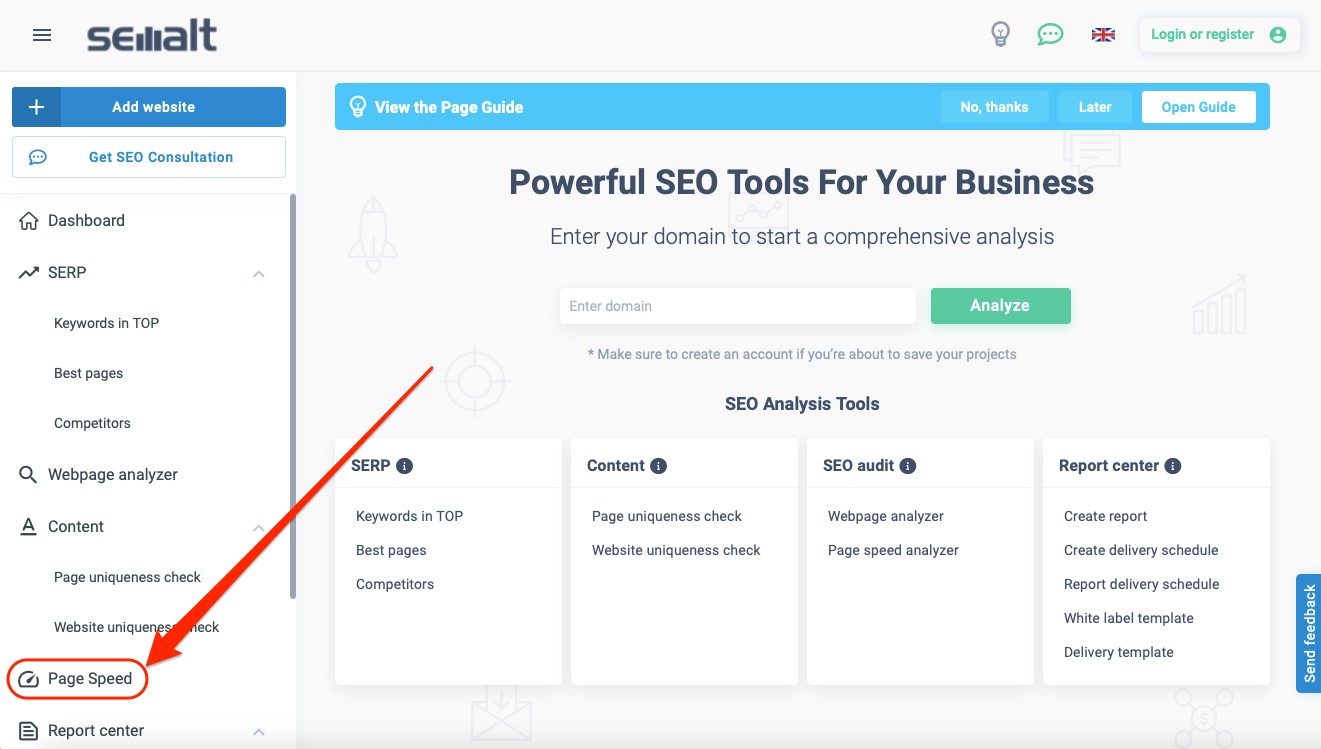
Step 3: The Page analyzer tool will open in just a few seconds. Now, you must enter your site's URL and click on the Check button to analyze the site.

Why Page Load Speed Matters?
Page load speed matters for every user opening a webpage on mobile as well as desktop devices. Users' satisfaction level increases when a webpage or website loads instantly. Some other reasons are:
- Frustrates Users: A slow loading webpage frustrates users and disappoints them. As a result, most of them do not return or speak badly about that site.
- Affects Conversion Rates: When a webpage loads slowly, fewer people stay on it and even fewer people convert. A slower page leads most of them to leave even before the appearance of offers, call-to-action, and other things on your site.
- Affects Bounce Rate: Bounce Rate, represented in the form of a percentage, shows how fast people visiting your website leave without doing anything. A higher bounce rate, often caused by the slow webpage, doesn't work in favor.
- Drives Away Mobile Users: A slow webpage taking time to load on mobile devices often drives away mobile users. It is not at all good for online businesses. The number of mobile users is continuously increasing over the last few years. There are even claims that users opening webpages on mobile devices have already surpassed users accessing webpages through the desktop. In this case, it becomes essential that a webpage loads fast.
There are several other reasons, but let's not discuss them now. One thing you must remember is that page load speed matters only when the content on your website is relevant and useful. If not, increasing the website's speed may not bring desired results.
Understanding Semalt's Page Speed Analyzer with Live Example
Let's understand Semalt's Page Speed Analyzer with a live example. The website we are going to analyze is mywindows10.com.
Here's how we began analyzing this website:

After opening the Page speed analyzer, we entered the website's URL and clicked on Check. The analysis report appeared on our screen in less than a minute.
What's in The Report?
mywindows10.com is a small website but has a very high page load speed. You'll find these four things in the report by Semalt's Page Speed Analyzer:
- Summary Window (With Overall Score On Desktop As Well As Mobile Devices)
- Webpage Load emulation
- Errors To Fix
- Successful Audits
Let's understand them one by one:
1. Summary Window
The summary window displays the overall score (on desktop as well as mobile) and reveals whether the score signifies good, average, or very bad load time. It'll also show the page load time, the total number of successful audits, and how many errors should be fixed.
It'll also help you understand what your website's score means. For example, a score of 90-100 signifies good loading speed and a score of 0-49 signifies extremely low loading speed.
For mywindows10.com, summary sections look like:
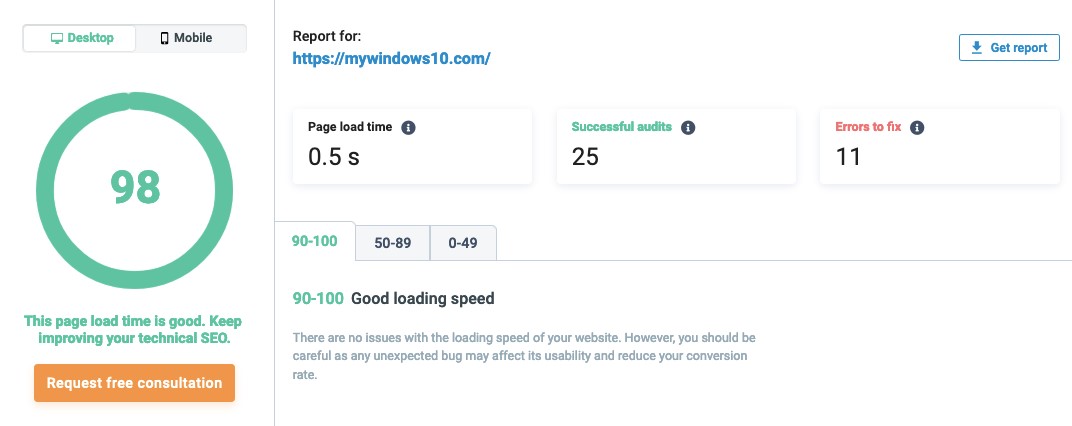
For Desktop
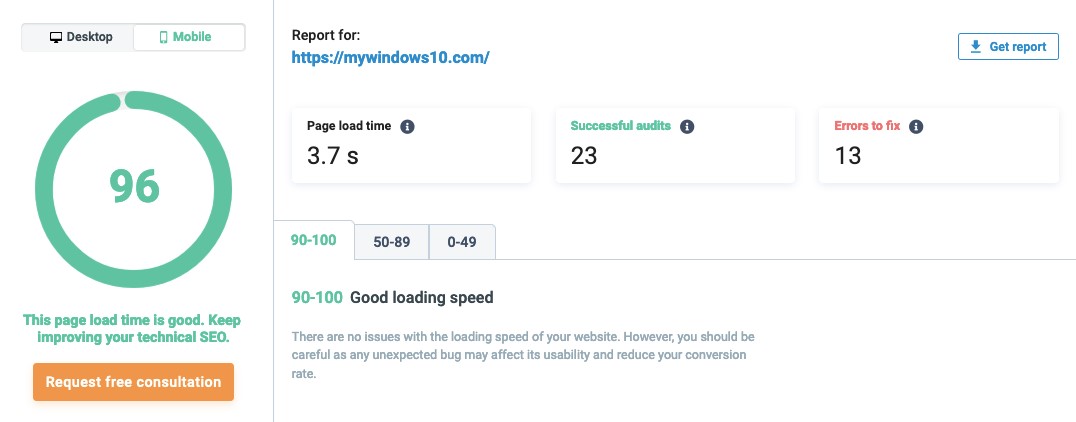
For Mobile
The best thing about this analyzer is that it points out exact errors even if the score is high. As you can see in the above example, the scores are 98 and 96, but it is still showing that there are 11 desktop-related and 13 mobile-related errors to fix.
This section also allows you to request a FREE consultation instantly and download the detailed report in PDF format for FREE.
2. Webpage Load Emulation
This section contains six (6) matrices obtained by emulating the webpage loading process in a desktop / mobile browser. The objective is to show how user-friendly a webpage is and how well it is optimized for Google SERP promotion.
The metrics used for emulation are:
- First Contentful Paint time
- First Meaningful Paint time
- First CPU Idle time
- Time to become Interactive
- Speed Index
- Maximum Potential First Input Delay time
For mywindows10.com, this section looks like:

For Desktop
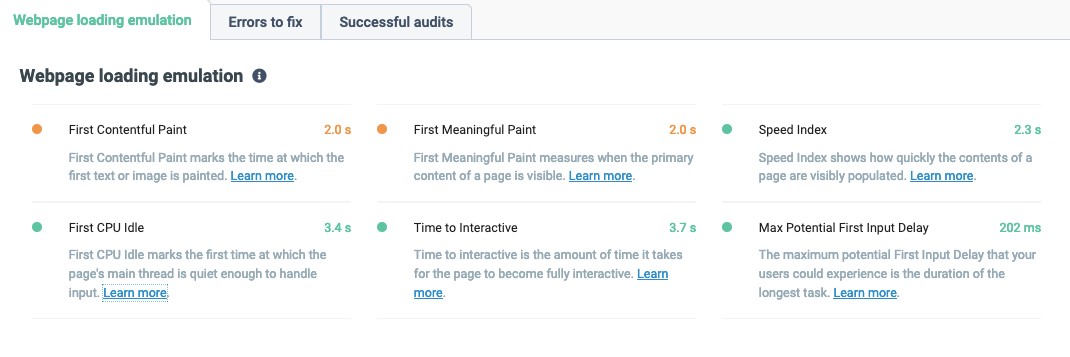
For Mobile
If you notice, every metric contains a link (Learn more). When you click on it, a new page opens containing useful information about that metric.
3. Errors To Fix
This section contains the errors affecting the load speed of a webpage. It also has suggestions to fix them. If you work on them, your page will load fast and attract more visitors.
You'll get suggestions about the load time of images, their formats, sizes, different elements on your site, and many other things. For mywindows10.com, this section looks like:
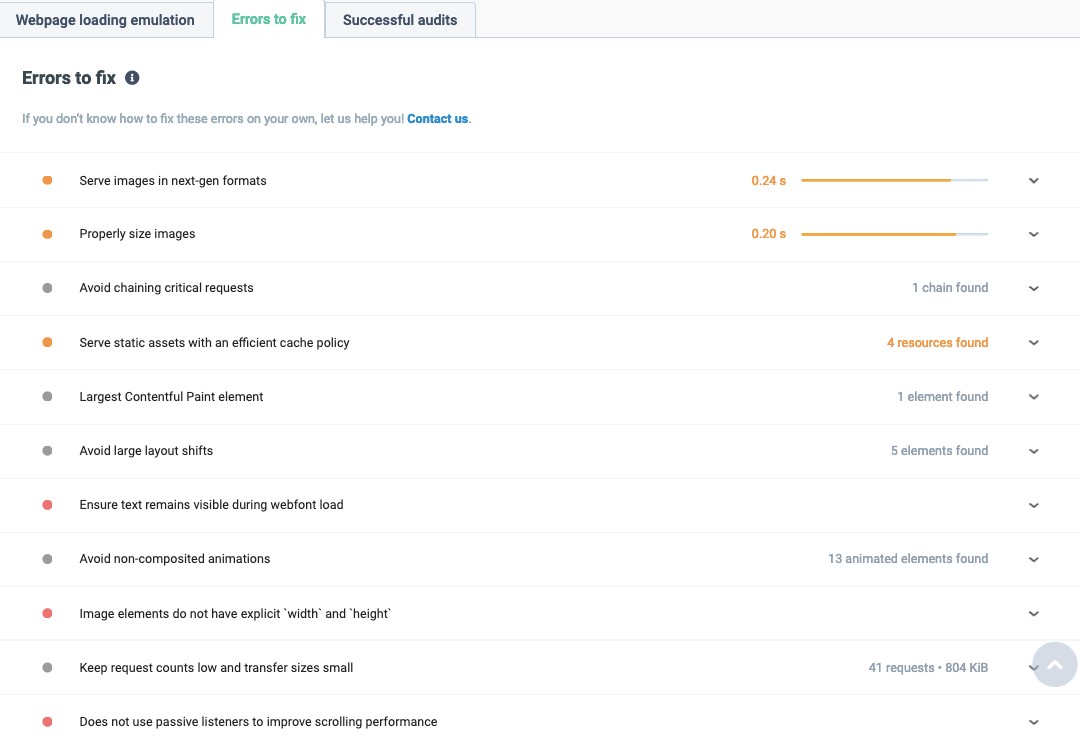
For Desktop
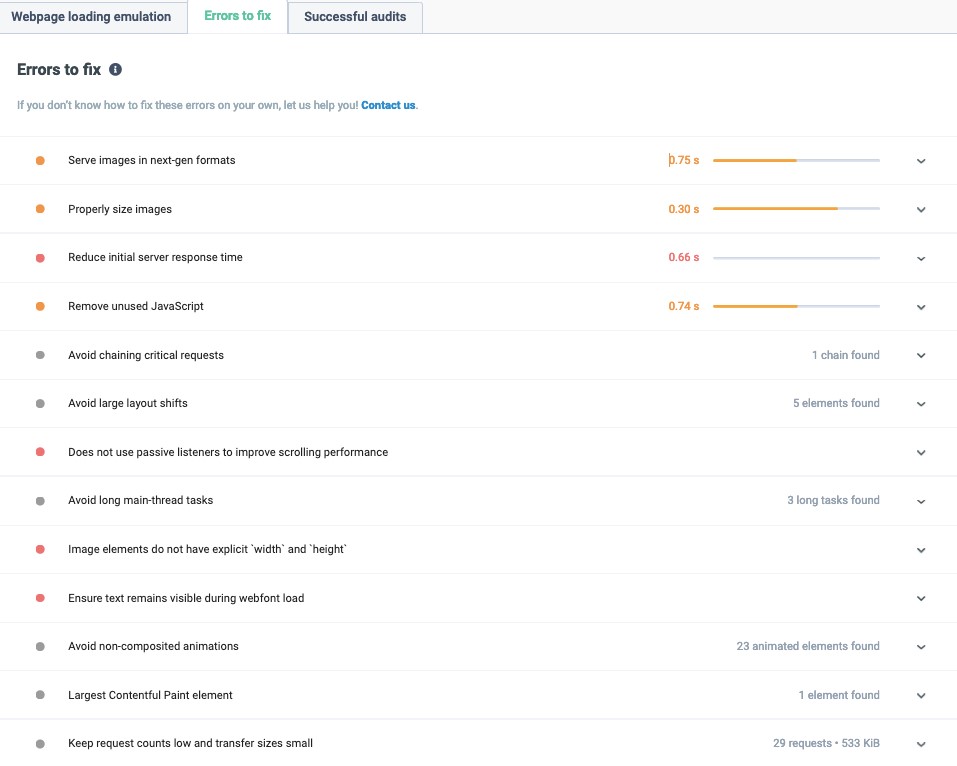
For Mobile
If you notice, there is a dropdown arrow on the right of every suggestion. When you click on it, more information about it will appear. Every suggestion also has a link (Learn more) in the end to help you gain more relevant information.
4. Successful Audits
This section shows audit results suitable for the optimum performance of your webpage. To help you more, the dropdown menu and "Learn more" links are the same as in previous sections.
For mywindows10.com, this section looks like:
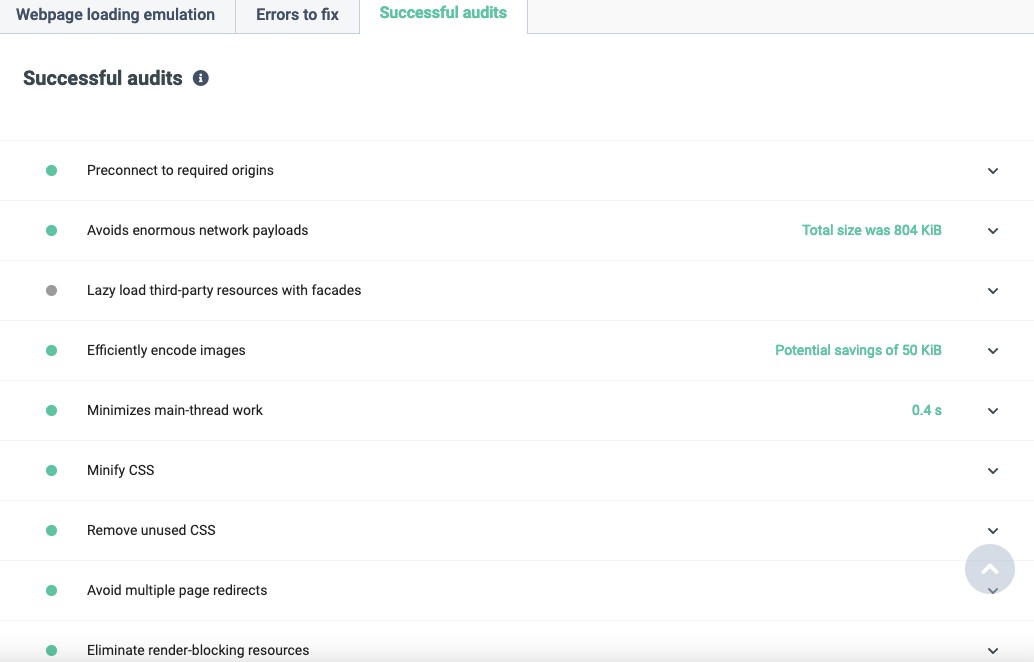
For Desktop
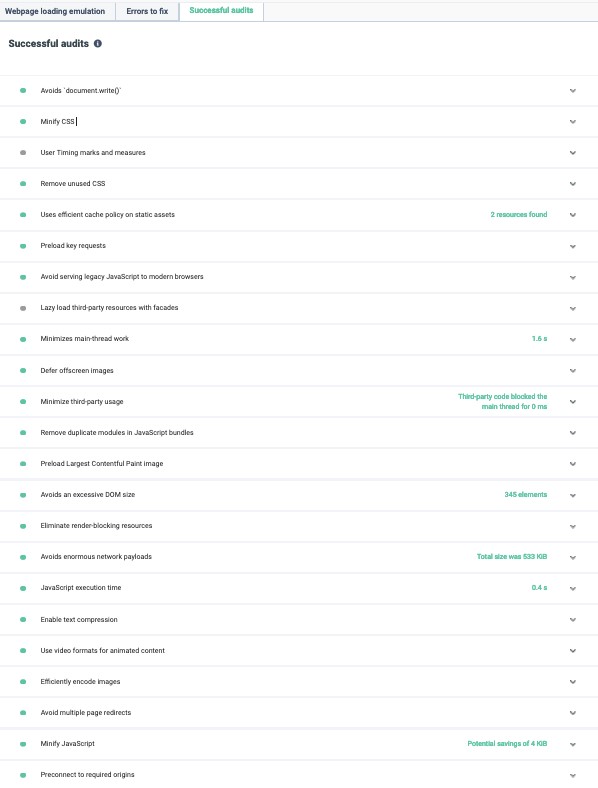
For Mobile
How To Instantly Boost The Load Speed?
If you can do the following few things on your own, you'll see a significant increase in the load speed of your website / webpage:
- Optimize Images: Issues with images deteriorate the performance of most sites. Make sure images on your site are optimized and are of small size. The best format nowadays is WEBP. In the process of optimizing images, keep in mind the quality also.
- Reduce Page Size: A webpage of large size means it'll take a longer time to load. You can consider compression, minification, and removing unused scripts.
- Use Caching: Caches help in the reuse of files evacuating the need to download them again. So, make use of caching whenever possible.
- Use CDN (Content Delivery Network): CDN caches the content of a site on multiple locations. It helps increase the page speed because the caching servers of CDN are usually located near to the target audience. Are you using a CDN (Content Delivery Network)?
Final Words
Whether it is about purchasing something, subscribing to some service, or getting information about anything, most of the world interacts online. This scenario has made fast-loading webpages a necessity.
Such pages ensure that your target audience sees your content faster and helps in increasing your revenue and profit. Moreover, fast-loading pages decrease the bounce rate and give you an edge over your competitors.
You should not only analyze the speed of your webpages / website regularly but also make sure it contains engaging content that satisfies users. If you do not understand how to speed up your webpages or want to increase their speed significantly, get in touch with the experts at Semalt.